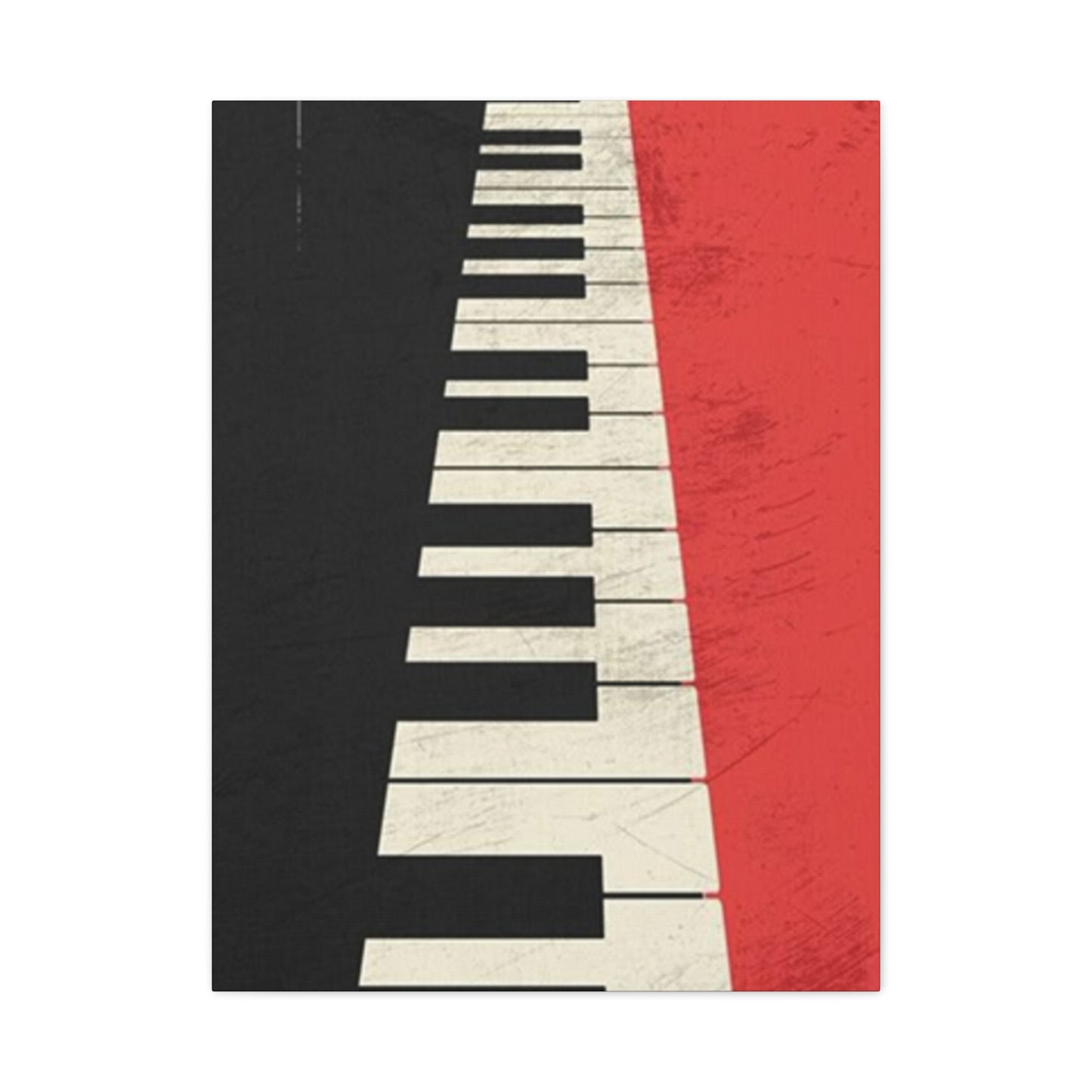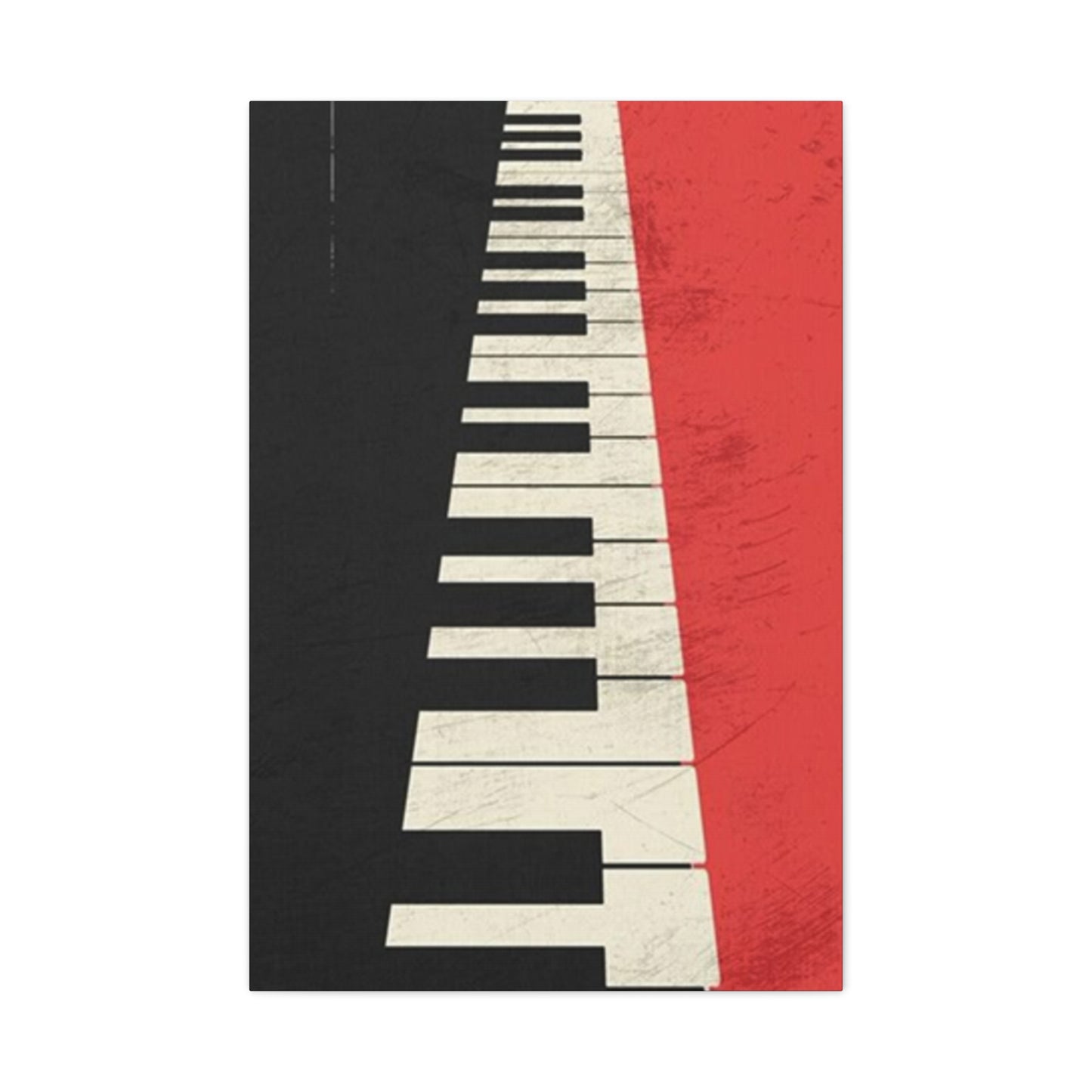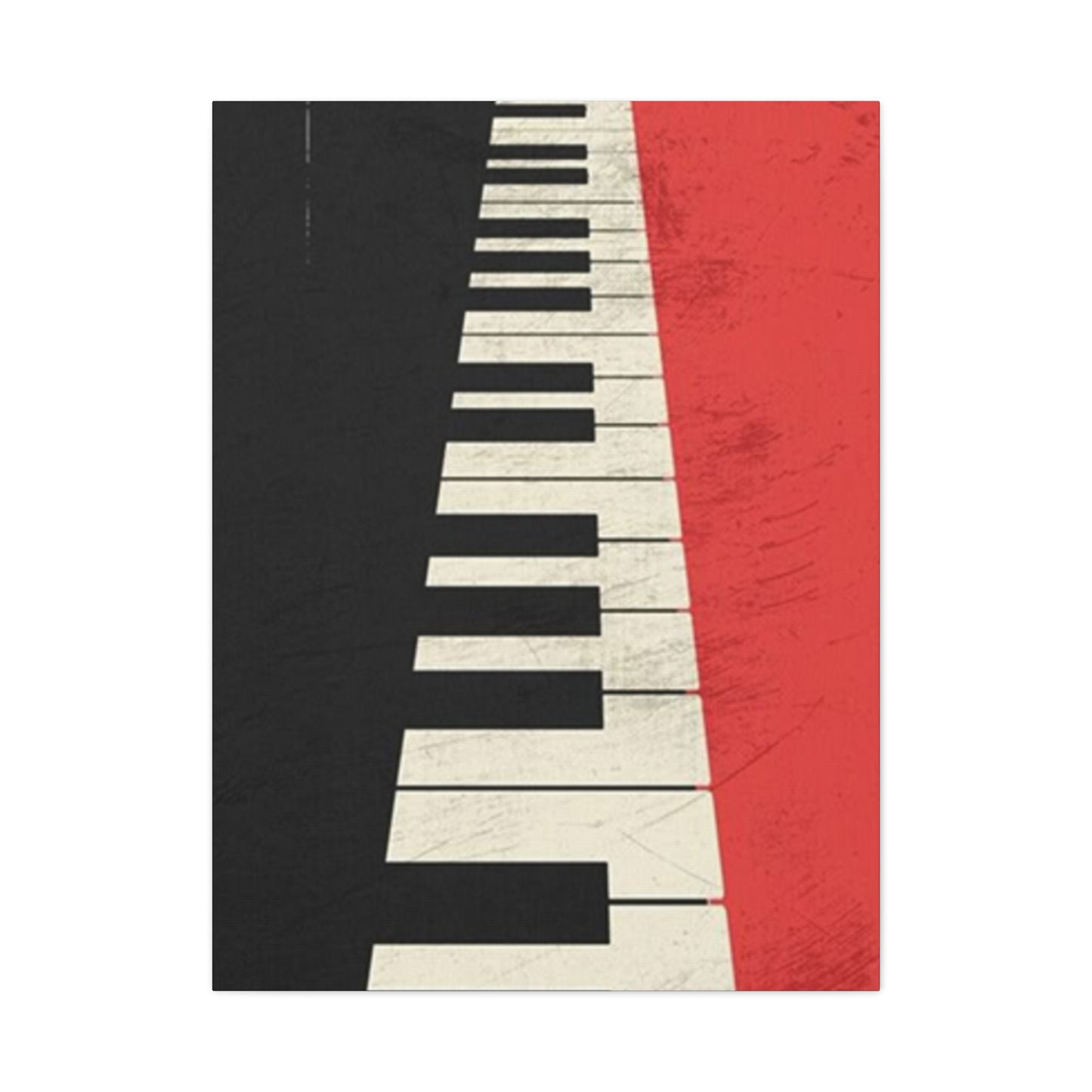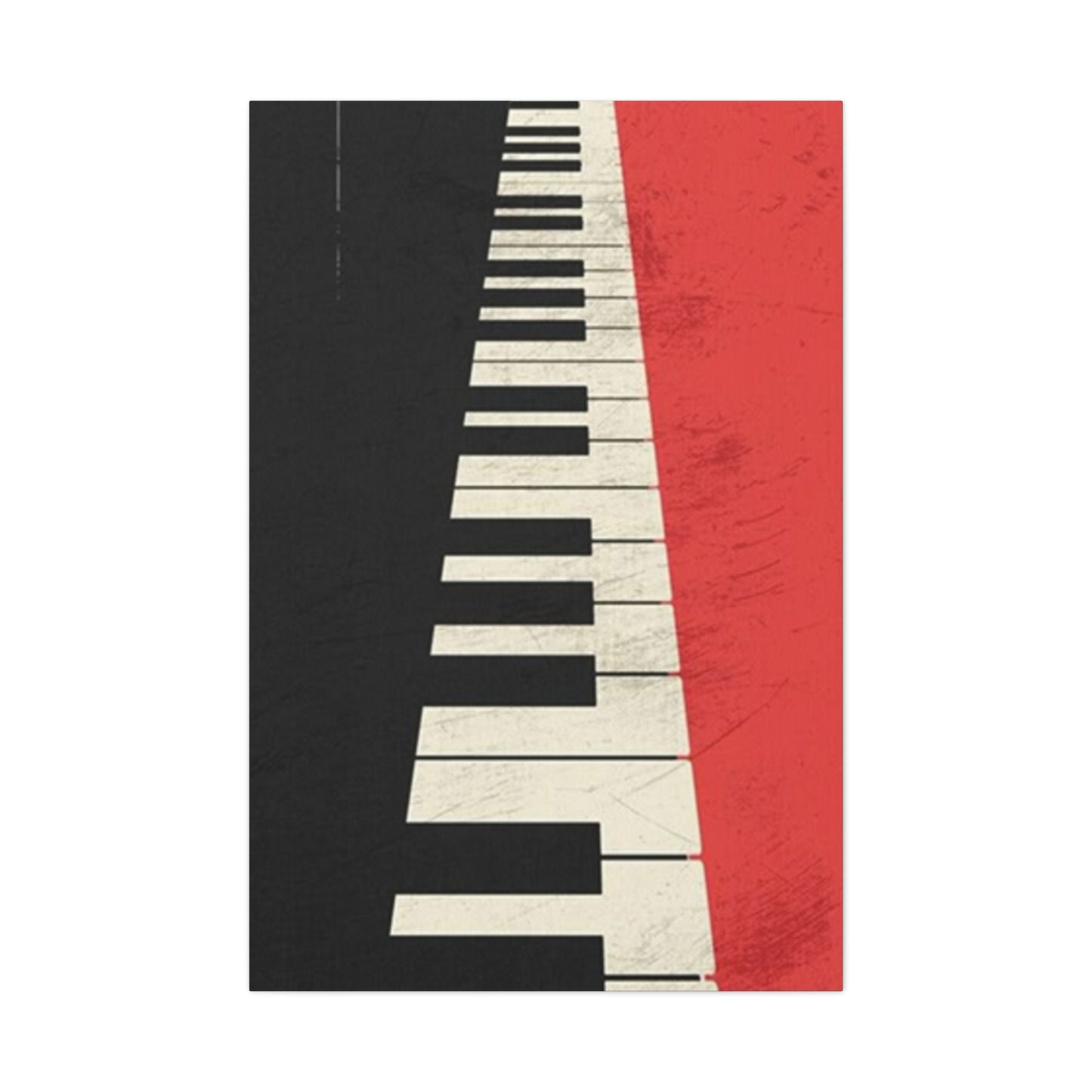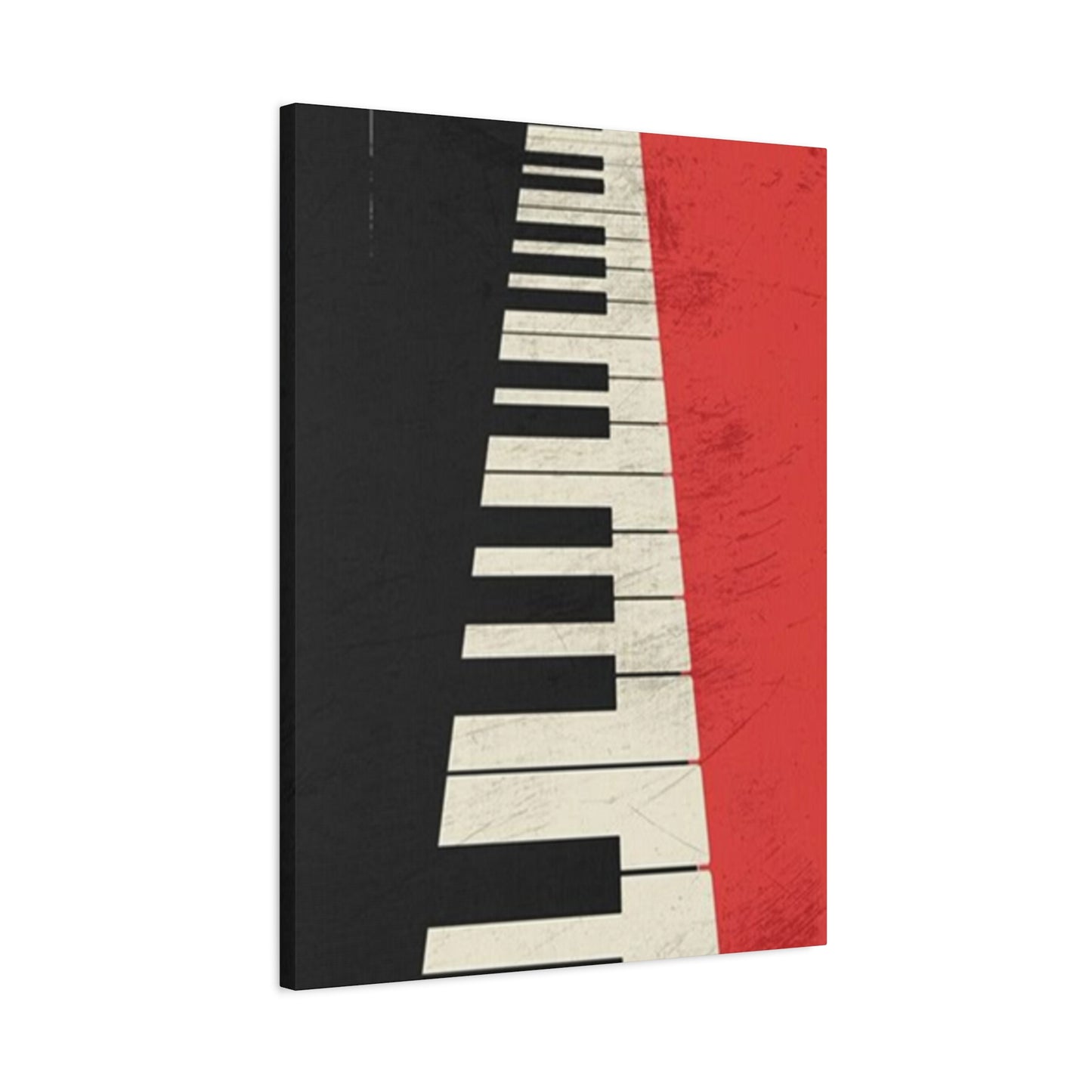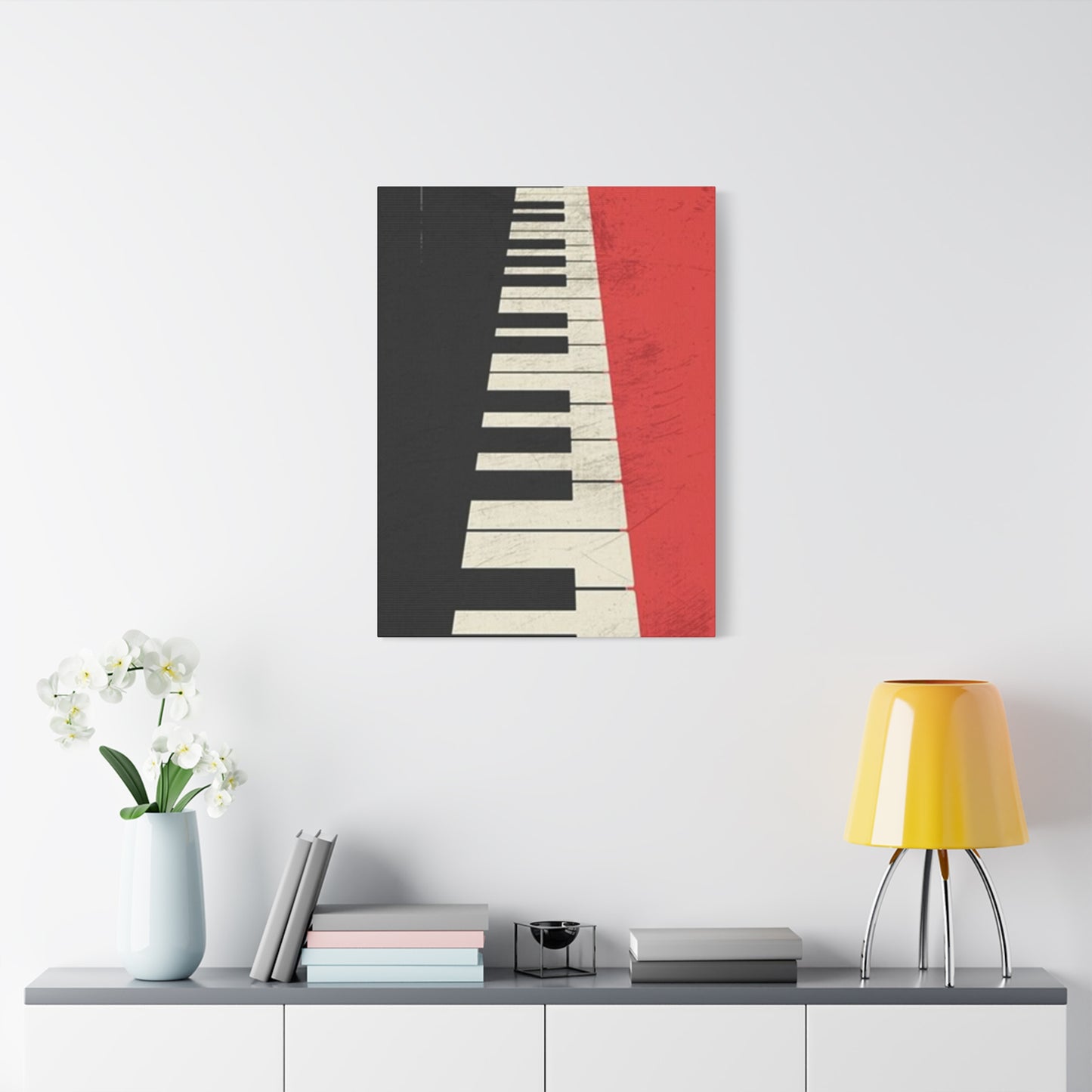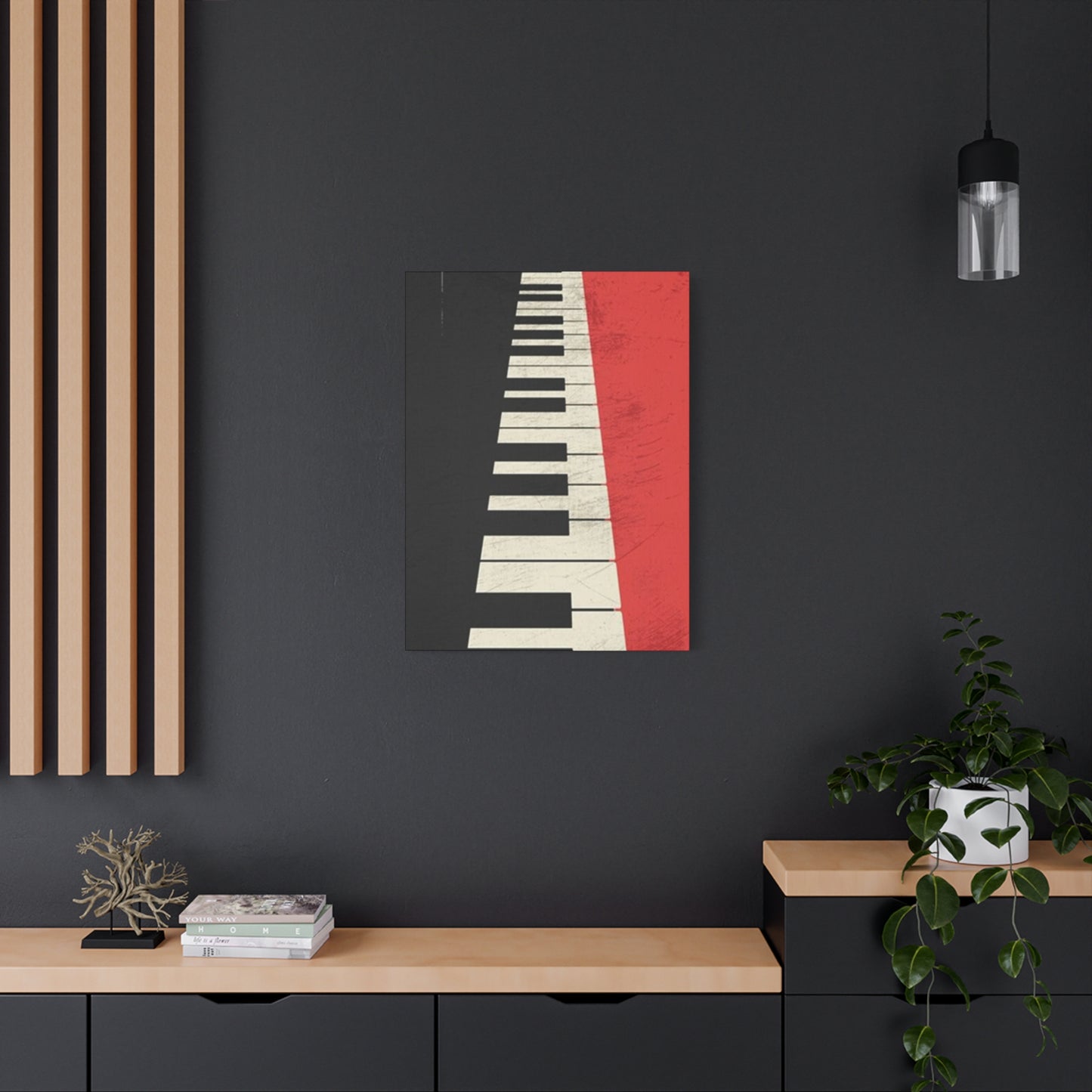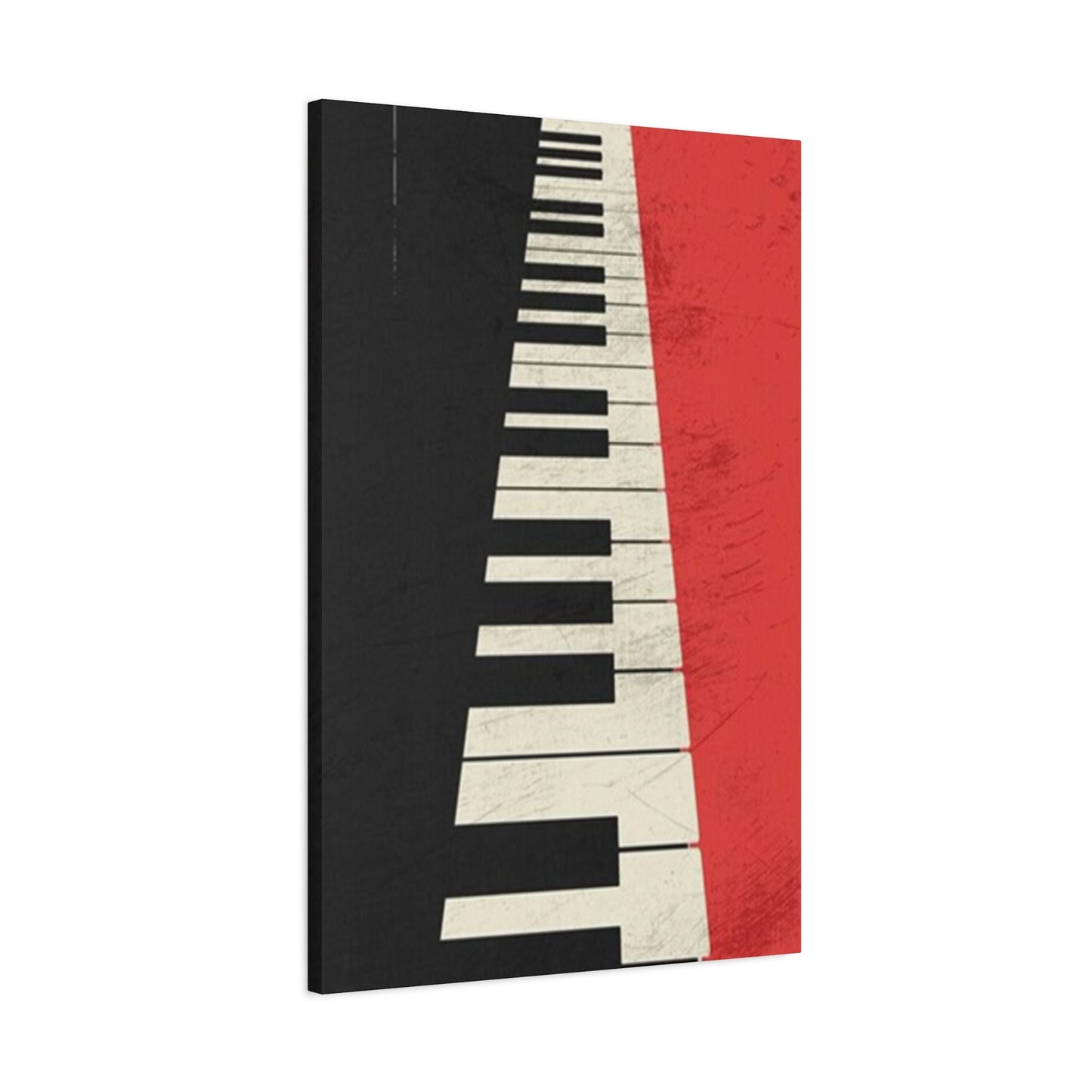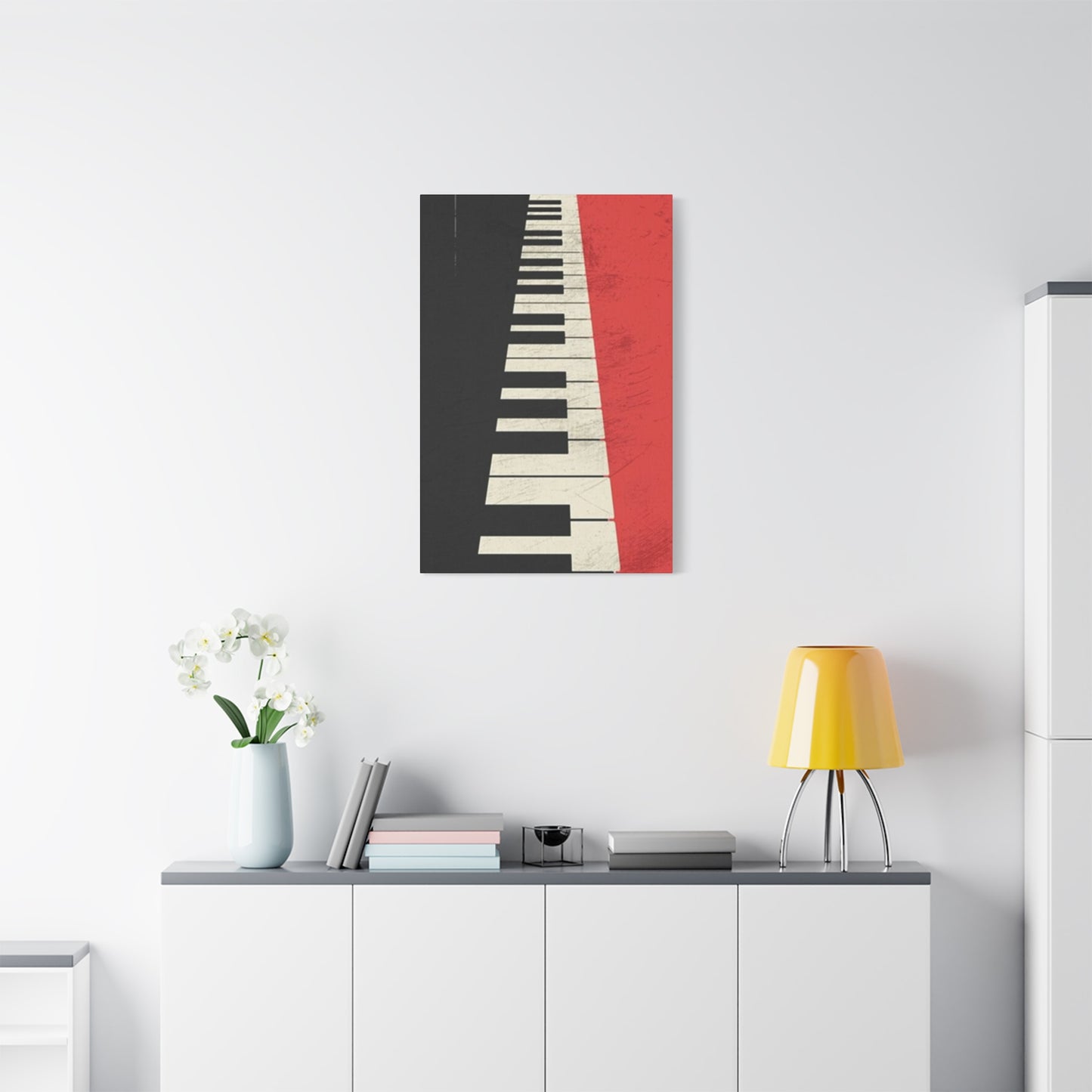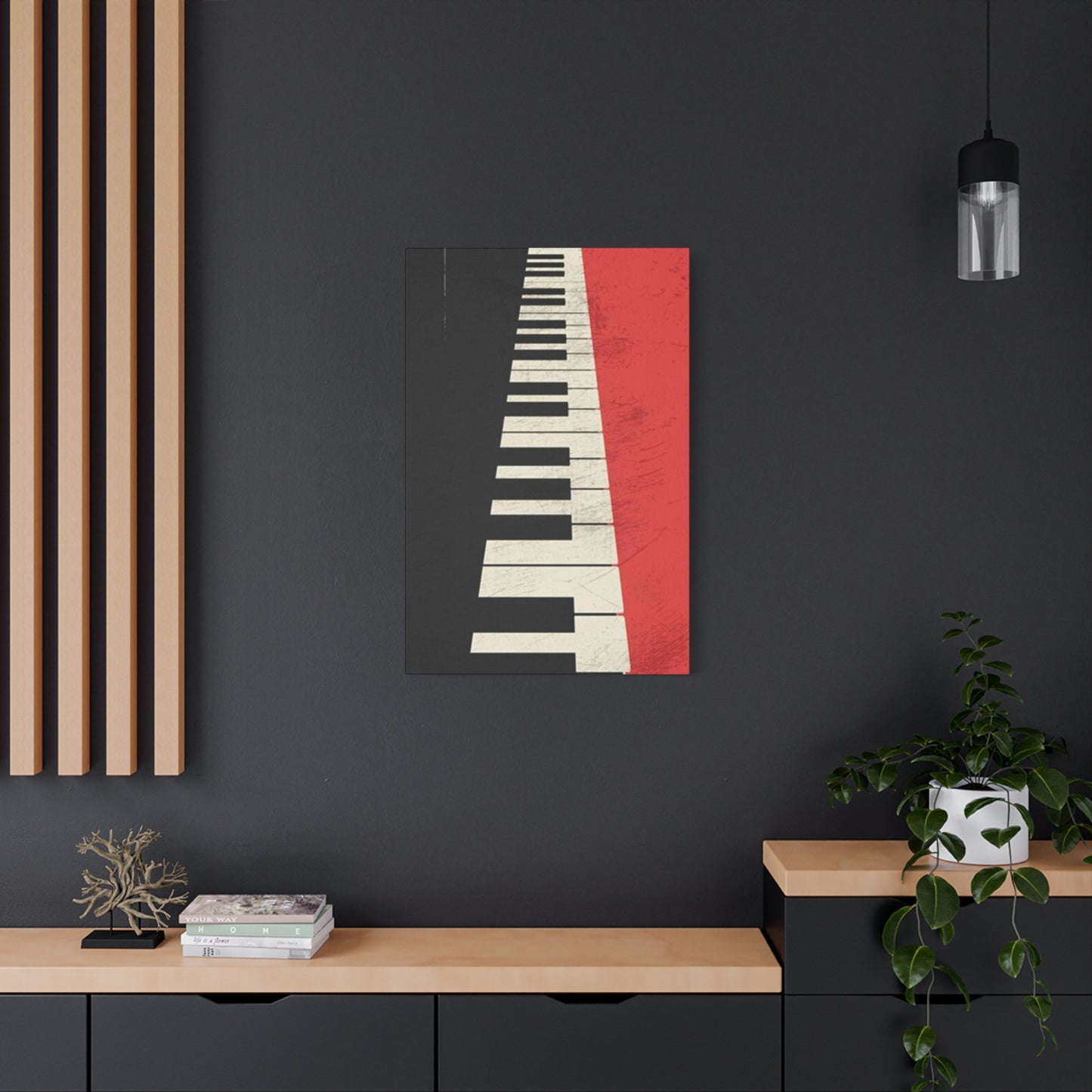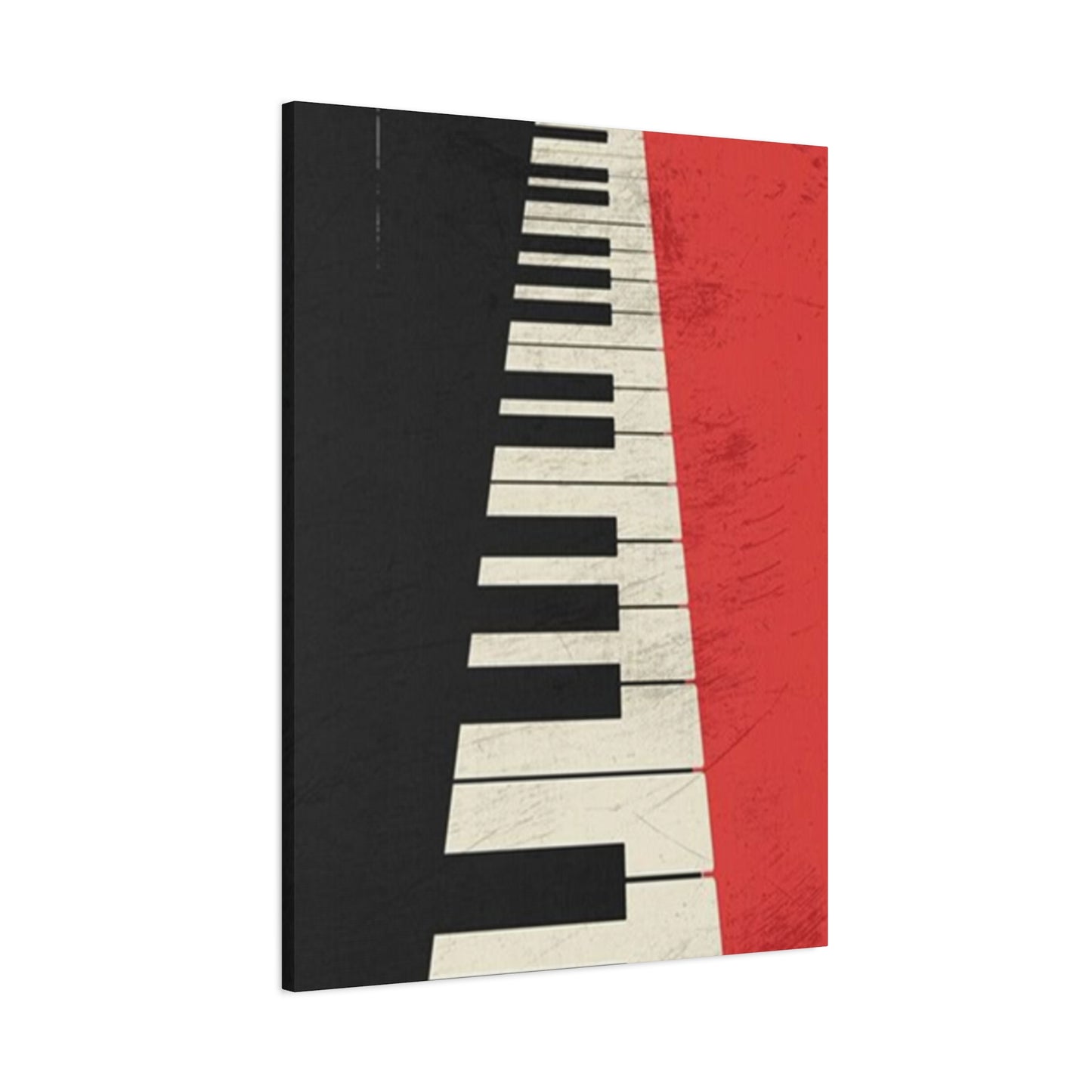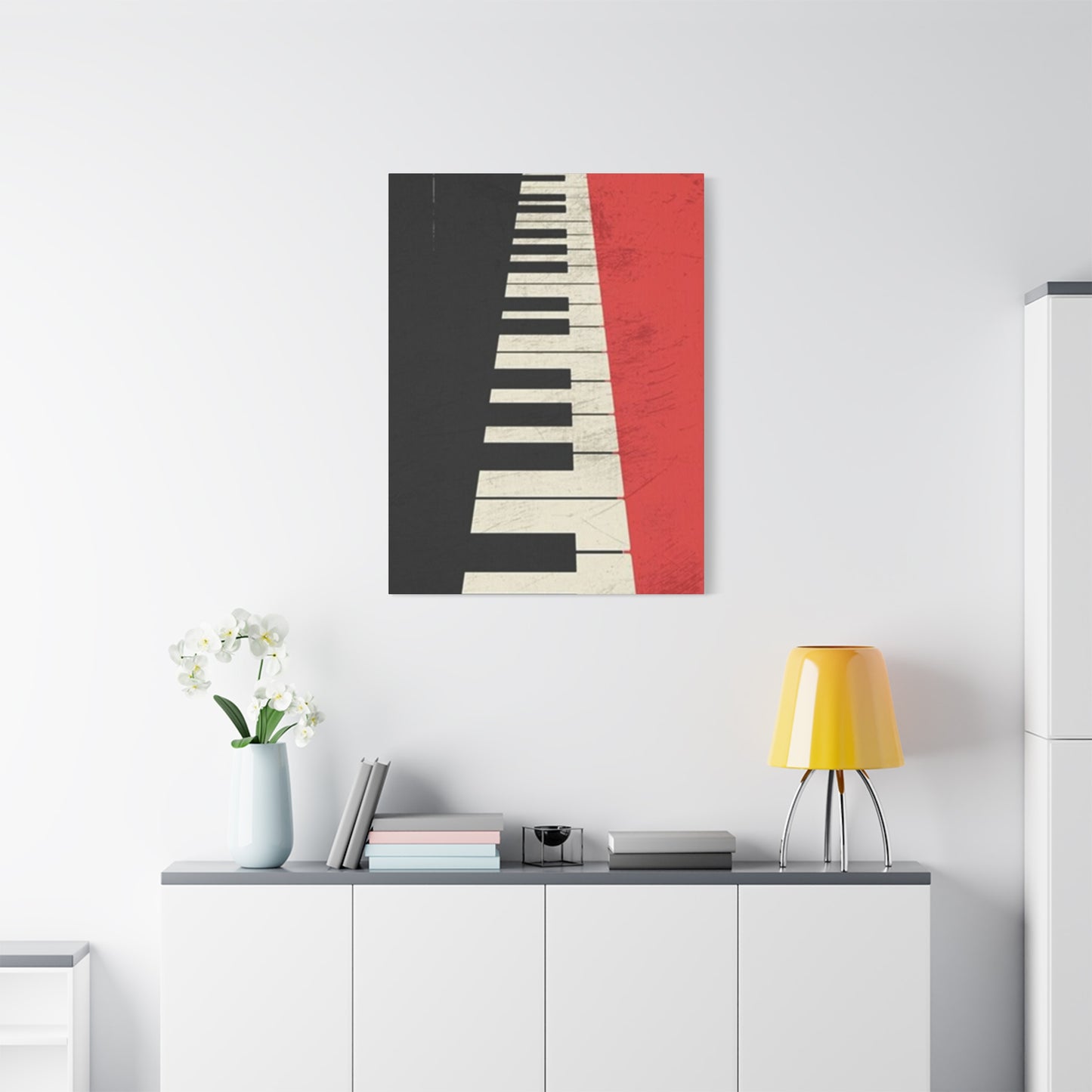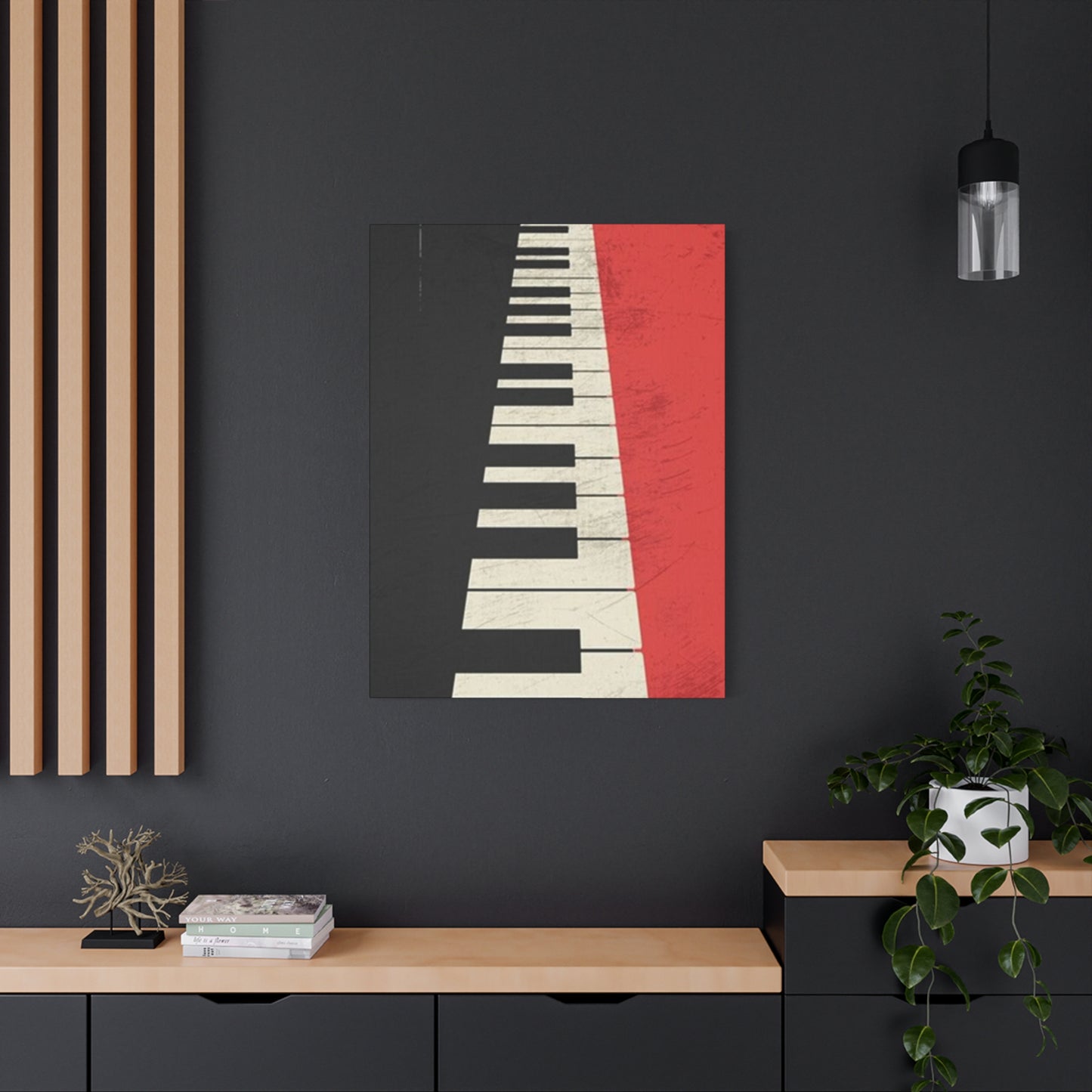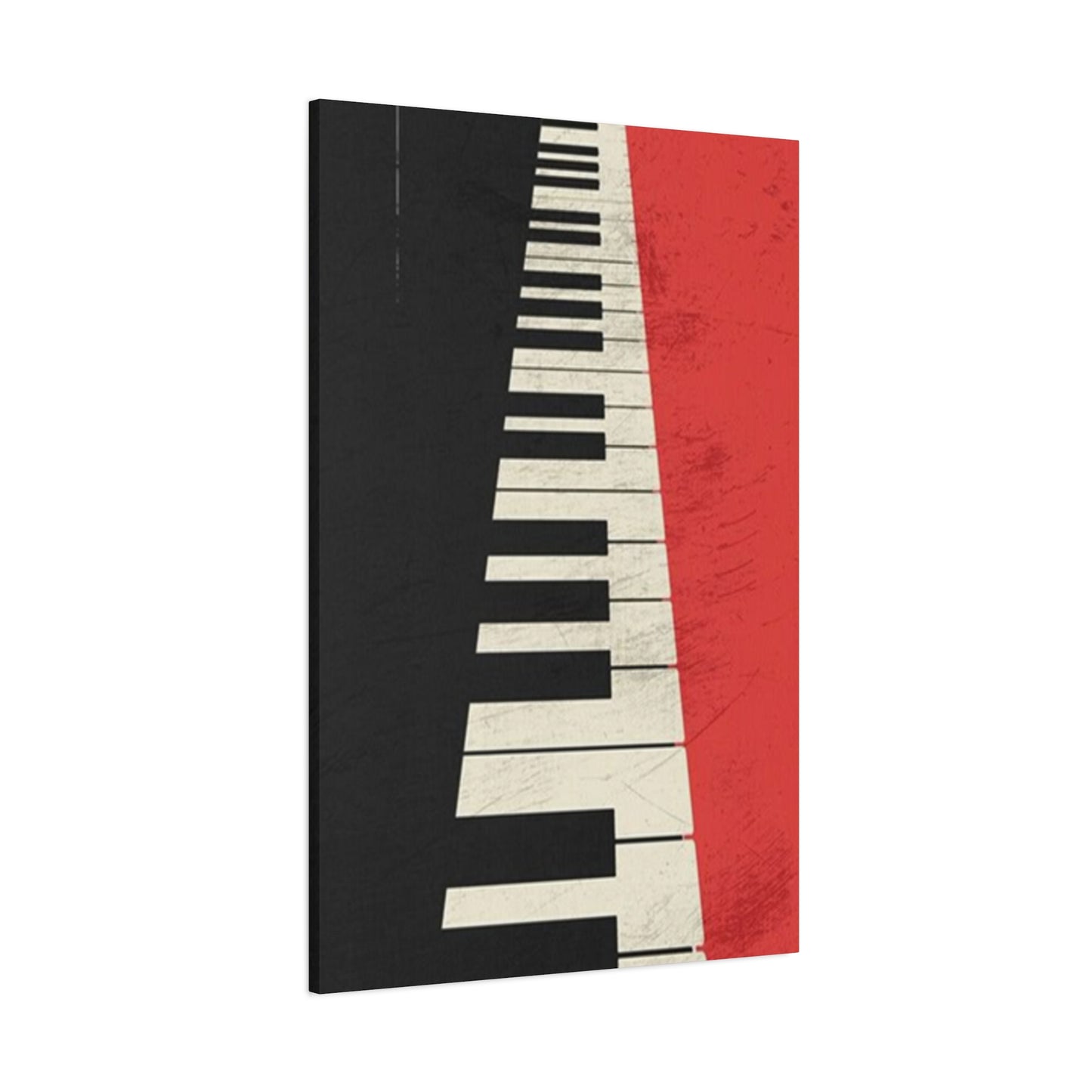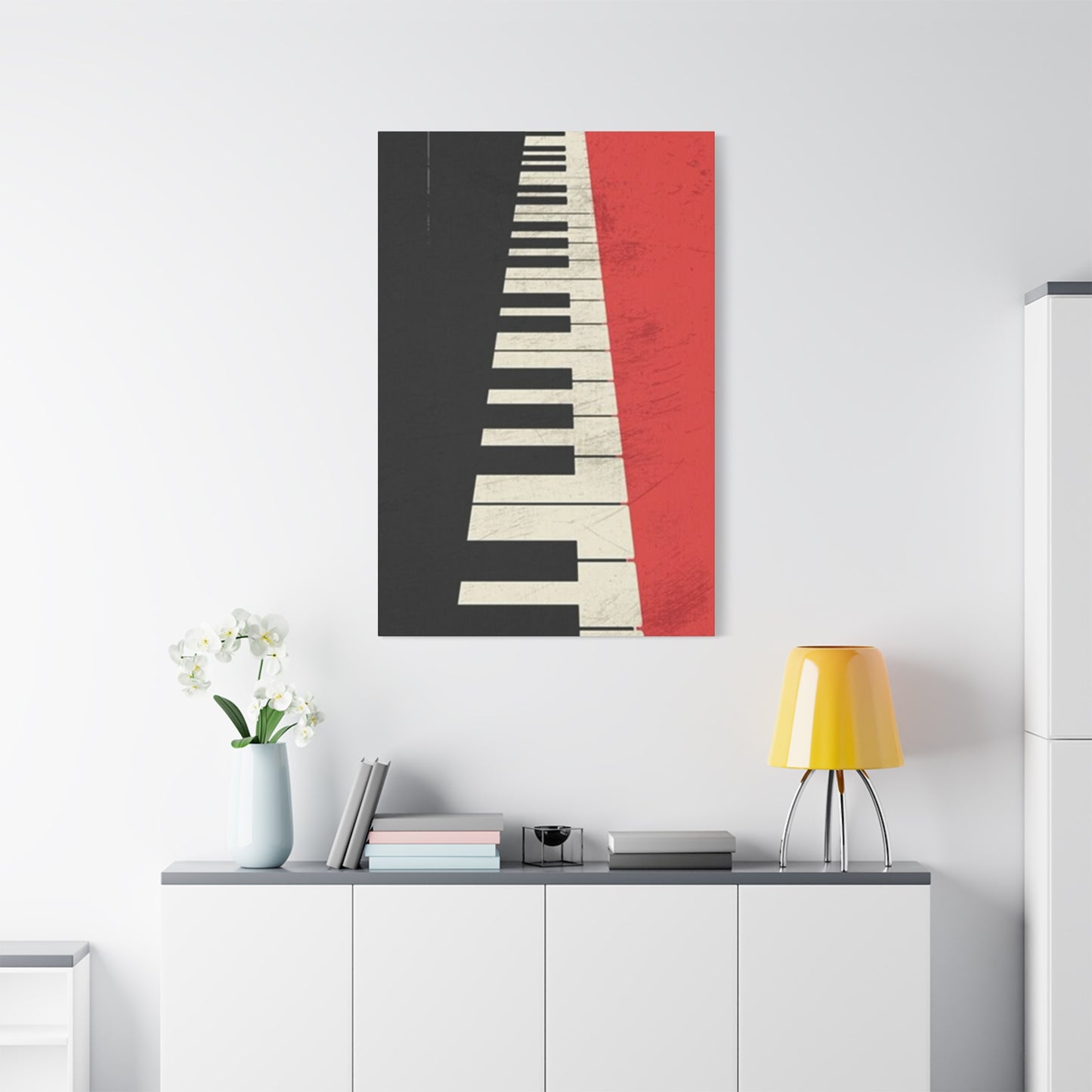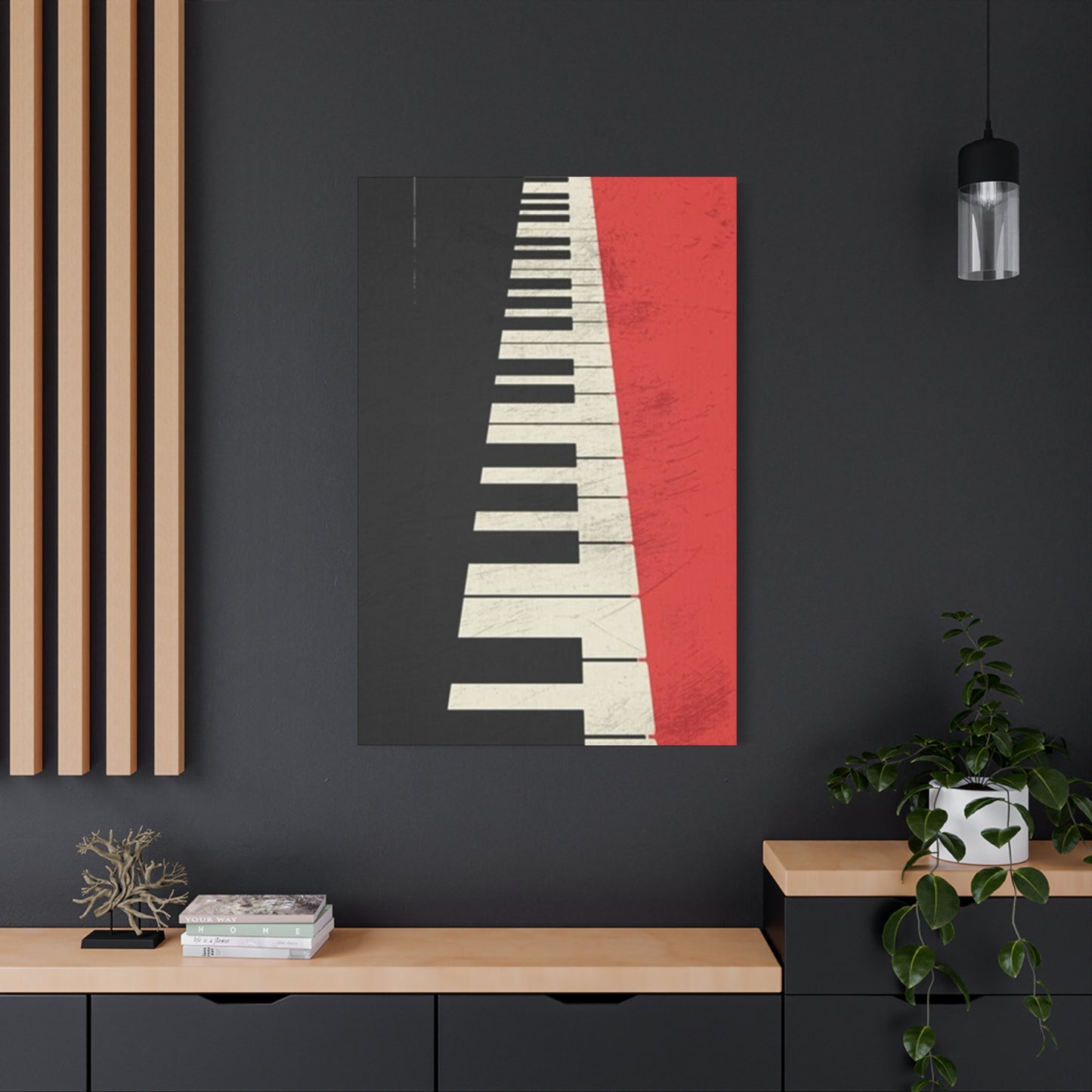Expressive Red Piano Wall Art: Perfect for Artistic Interiors
The intersection of musical passion and visual aesthetics creates an extraordinary realm where piano-themed artwork transforms living spaces into harmonious sanctuaries of artistic expression. Piano wall art represents more than mere decoration; it embodies the soul of musical creativity, bringing the elegance and sophistication of this beloved instrument into our daily visual experience. Whether adorning the walls of professional musicians, music students, or simply lovers of beautiful design, piano-themed artwork serves as a constant reminder of the power and beauty inherent in musical expression.
The world of piano wall art encompasses an incredibly diverse range of artistic styles, from photorealistic depictions of grand concert pianos to abstract interpretations that capture the essence of musical movement and emotion. Each piece tells its own story, whether it's the gleaming keys of a pristine instrument waiting to be played, the weathered character of a vintage upright piano that has witnessed decades of musical moments, or the dynamic energy of hands dancing across the keyboard in the heat of performance.
Modern interior design has embraced the timeless appeal of musical motifs, with piano wall art serving as both focal points and subtle accents that enhance the overall aesthetic of residential and commercial spaces. The versatility of piano-themed artwork allows it to complement various design philosophies, from minimalist contemporary settings where a single striking piece creates dramatic impact, to more traditional environments where multiple pieces work together to create a cohesive musical narrative throughout the space.
The emotional resonance of piano imagery extends beyond its visual appeal, tapping into deep-seated associations with creativity, sophistication, and artistic achievement. For many, the sight of piano keys or the silhouette of a grand piano instantly evokes memories of childhood lessons, concert performances, or intimate musical moments shared with loved ones. This emotional connection makes piano wall art particularly meaningful, transforming it from simple decoration into personal expression and cultural statement.
Piano Instrument Wall Art Collections and Artistic Interpretations
Piano instrument wall art represents a sophisticated category of decorative pieces that celebrate the iconic nature of this beloved musical instrument. These artworks range from detailed photographic reproductions that showcase every nuance of piano construction to stylized illustrations that capture the essence of musical performance. The beauty of piano instrument wall art lies in its ability to convey both the technical precision and emotional depth associated with piano music.
Contemporary artists have developed innovative approaches to representing pianos in visual art, often incorporating mixed media techniques that combine traditional painting methods with digital manipulation, textural elements, and experimental color palettes. These modern interpretations maintain respect for the classical nature of the piano while introducing fresh perspectives that appeal to today's diverse aesthetic preferences.
The craftsmanship involved in creating high-quality piano instrument wall art requires deep understanding of both musical instruments and visual composition. Artists must consider factors such as proportion, lighting, perspective, and emotional tone to create pieces that resonate with viewers on multiple levels. The most successful piano wall art pieces manage to capture not just the physical appearance of the instrument, but also its spiritual significance as a vessel for human creativity and expression.
Gallery-quality piano instrument wall art often features meticulous attention to detail, showcasing elements such as the intricate woodgrain patterns of piano cases, the precise alignment of keys, the elegant curves of piano legs, and the sophisticated mechanical components that make musical performance possible. These details contribute to the overall impact of the artwork while demonstrating the artist's technical skill and deep appreciation for the subject matter.
Museum-quality reproductions of famous piano-themed paintings provide another avenue for incorporating piano instrument wall art into living spaces. These pieces allow art enthusiasts to enjoy classic works by renowned artists who found inspiration in musical themes, bringing centuries of artistic tradition into contemporary home environments.
The therapeutic qualities of piano instrument wall art should not be overlooked, as many individuals find comfort and inspiration in surrounding themselves with imagery that represents their musical aspirations or achievements. Music teachers often incorporate piano wall art into their studios to create environments that inspire students and reinforce the importance of musical study, while professional musicians may choose pieces that reflect their personal artistic journey or career milestones.
Golden Piano Canvas Prints: Luxury and Elegance in Musical Art
Golden piano canvas prints represent the pinnacle of luxurious musical wall art, combining the timeless appeal of piano imagery with the opulent beauty of gold tones and metallic finishes. These sophisticated pieces transform ordinary wall spaces into galleries of musical elegance, creating focal points that command attention while maintaining an air of refined sophistication that appeals to discerning art collectors and music lovers alike.
The use of gold in piano canvas prints serves multiple aesthetic purposes, from creating visual warmth and richness to symbolizing the precious nature of musical talent and achievement. Artists working in this medium often employ various techniques to achieve authentic metallic effects, including gold leaf application, metallic paint layering, and digital enhancement processes that simulate the lustrous quality of real gold surfaces.
Professional printing techniques used for golden piano canvas prints ensure color accuracy and longevity, with many pieces featuring archival-quality inks and canvas materials that resist fading and deterioration over time. High-resolution printing processes capture every subtle gradation of gold tone, from pale champagne hues to rich antique gold finishes, allowing for remarkable depth and dimensional quality in the final artwork.
The symbolic significance of golden piano imagery resonates deeply with musicians and music enthusiasts, as gold has long been associated with excellence, achievement, and artistic mastery. Golden piano canvas prints often commemorate special musical milestones, serve as inspirational focal points in practice spaces, or simply celebrate the inherent value of musical education and performance.
Interior designers frequently recommend golden piano canvas prints for spaces that require sophisticated focal points without overwhelming existing color schemes. The warm metallic tones complement both neutral and bold color palettes, while the musical theme adds cultural depth and intellectual interest to residential and commercial environments.
The production of high-quality golden piano canvas prints involves careful consideration of lighting effects, shadow placement, and metallic highlight distribution to create pieces that appear to glow from within. Master printers work closely with artists to ensure that the golden elements maintain their brilliance under various lighting conditions, from natural daylight to artificial illumination.
Collectors of golden piano canvas prints often seek pieces that demonstrate technical excellence in both artistic composition and printing quality. Limited edition prints with numbered certificates of authenticity provide additional value and exclusivity, making these pieces suitable for serious art collections as well as decorative applications.
The versatility of golden piano canvas prints allows them to complement various interior design styles, from traditional formal settings where they enhance existing luxury elements to contemporary spaces where they introduce warmth and sophistication. The musical theme provides cultural context and personal meaning that transcends simple decoration, creating lasting emotional connections between viewers and artwork.
Jazz Piano Wall Décor Posters: Capturing Musical Energy and Style
Jazz piano wall décor posters embody the dynamic spirit and improvisational energy that defines one of America's greatest musical contributions. These vibrant pieces capture the essence of jazz performance, from intimate club settings with smoky atmospheres to grand concert hall presentations where virtuoso pianists command center stage. The artistic challenge lies in translating the temporal nature of jazz music into static visual imagery that still conveys movement, rhythm, and emotional intensity.
The aesthetic elements commonly found in jazz piano wall décor include bold color contrasts that mirror the dramatic emotional swings characteristic of jazz performance, dynamic composition techniques that suggest musical movement and improvisation, and atmospheric effects that evoke the legendary venues where jazz history was made. Artists working in this genre often incorporate elements such as musical notation fragments, vintage microphones, stage lighting effects, and audience silhouettes to create comprehensive visual narratives.
Historical authenticity plays an important role in many jazz piano wall décor pieces, with artists drawing inspiration from the golden age of jazz clubs, famous recording sessions, and legendary performers who shaped the genre. These pieces often feature period-appropriate details such as vintage piano models, classic interior design elements, and fashion styles that transport viewers to specific eras in jazz history.
The color palettes used in jazz piano wall décor tend to reflect the mood and energy of jazz music itself, with deep blues and purples suggesting late-night performances, warm amber and gold tones evoking the intimate glow of club lighting, and dramatic blacks and whites creating the stark contrasts that define classic jazz photography and artwork.
Contemporary jazz piano wall décor often incorporates modern design elements while maintaining respect for jazz traditions. These pieces might feature abstract interpretations of piano keys, stylized musician silhouettes, or graphic design elements that suggest musical movement and rhythm without literal representation of instruments or performers.
The emotional impact of jazz piano wall décor extends beyond its visual appeal, often serving as inspiration for musicians and music students who aspire to master the improvisational skills and artistic freedom that define jazz performance. These pieces create environments that celebrate creative expression and musical innovation, making them particularly appropriate for music schools, practice facilities, and performance venues.
Educational applications of jazz piano wall décor include pieces that highlight important figures in jazz history, significant venues that contributed to the genre's development, and technical aspects of jazz performance such as chord progressions and improvisational techniques. These educational elements add cultural depth and historical context to decorative applications.
The printing techniques used for high-quality jazz piano wall décor ensure that the dynamic energy and visual complexity of these pieces translate effectively to various sizes and formats. Professional printing processes maintain color accuracy and detail clarity, allowing viewers to appreciate subtle elements such as musical notation, atmospheric effects, and performer expressions that contribute to the overall impact of the artwork.
Abstract Piano Keys Wall Art: Modern Interpretations of Musical Elements
Abstract piano keys wall art represents a fascinating intersection between musical symbolism and contemporary artistic expression, where traditional piano imagery is deconstructed and reimagined through modern artistic sensibilities. These pieces challenge conventional representations of piano keys, transforming familiar black and white patterns into dynamic compositions that suggest musical movement, rhythm, and emotional expression through purely visual means.
The artistic process behind abstract piano keys wall art involves careful consideration of fundamental design elements such as line, form, color, and spatial relationships. Artists working in this medium often begin with the recognizable pattern of piano keys as a foundation, then manipulate these elements through various techniques including fragmentation, distortion, color transformation, and dimensional manipulation to create entirely new visual experiences.
Color theory plays a crucial role in abstract piano keys wall art, with artists frequently departing from the traditional black and white palette to explore how different color combinations can convey various musical moods and emotions. Warm color schemes might suggest energetic jazz improvisation or passionate romantic ballads, while cool tones could evoke contemplative classical pieces or melancholy blues compositions.
The geometric nature of piano keys provides an excellent foundation for abstract artistic interpretation, as the regular pattern of black and white keys offers both structure and flexibility for creative manipulation. Artists can maintain the mathematical precision that appeals to viewers' sense of order while introducing irregular elements that create visual tension and artistic interest.
Dimensional effects in abstract piano keys wall art often simulate the physical act of piano playing, with keys appearing to move, bend, or float in space to suggest the dynamic nature of musical performance. These effects can be achieved through various artistic techniques including perspective manipulation, shadow play, layering, and digital enhancement processes.
The psychological impact of abstract piano keys wall art derives from its ability to trigger musical associations and memories while presenting them in unexpected visual contexts. Viewers often report experiencing synesthetic responses to these pieces, where visual elements seem to suggest sounds, rhythms, or musical textures even in the absence of actual audio stimulation.
Contemporary interior design has embraced abstract piano keys wall art for its versatility and modern aesthetic appeal. These pieces can serve as striking focal points in minimalist settings, complement other abstract artworks in eclectic collections, or provide sophisticated musical references in professional environments such as recording studios, music schools, and performance venues.
The production techniques used for abstract piano keys wall art vary widely depending on the artist's vision and the intended final presentation. Traditional painting methods might be combined with digital manipulation, mixed media applications, or experimental printing processes to achieve unique visual effects that cannot be replicated through conventional artistic approaches.
Educational applications of abstract piano keys wall art include pieces designed to help music students visualize theoretical concepts such as scale patterns, chord structures, and harmonic relationships. These pieces translate abstract musical concepts into visual representations that can enhance learning and understanding of piano technique and music theory.
Watercolor Piano Wall Canvas: Fluid Artistry and Musical Expression
Watercolor piano wall canvas represents a delicate fusion of fluid artistic technique and musical subject matter, creating pieces that capture both the precision of piano construction and the flowing nature of musical performance. The watercolor medium offers unique opportunities for artistic expression, with its characteristic transparency, color blending capabilities, and organic flow patterns providing perfect metaphors for the dynamic nature of piano music.
The technical challenges involved in creating successful watercolor piano wall canvas pieces require masterful control of water, pigment, and timing. Artists must work quickly and decisively, as watercolor's fluid nature allows little opportunity for correction or revision. This immediacy creates an artistic parallel to piano performance, where musicians must commit to their interpretations in real-time, creating spontaneous moments of beauty that cannot be exactly replicated.
Color transparency effects inherent in watercolor technique create opportunities for layered compositions where piano elements can appear to emerge from or dissolve into atmospheric backgrounds. These effects are particularly effective for suggesting the ephemeral nature of musical sound, which exists only in the moment of performance before fading into memory and silence.
The organic flow patterns characteristic of watercolor painting can be used to suggest various aspects of piano music, from the smooth legato passages that require seamless connection between notes to the dynamic crescendos and diminuendos that create emotional intensity in musical performance. Artists often use these natural watercolor effects to create visual rhythms that parallel musical rhythms.
Atmospheric effects achievable through watercolor techniques include soft-focus backgrounds that suggest concert hall ambiance, dramatic lighting effects that highlight piano details, and weather-like patterns that can evoke specific musical moods or seasons. These atmospheric elements contribute to the overall emotional impact of the artwork while maintaining focus on the central piano imagery.
The paper selection process for watercolor piano wall canvas is crucial for achieving optimal artistic results. Different paper textures and weights affect how watercolor pigments behave, with rough papers creating granular effects that might suggest the mechanical nature of piano action, while smooth papers allow for precise detail work that can capture the refined elegance of piano construction.
Preservation concerns for watercolor piano wall canvas include protection from direct sunlight, humidity control, and proper framing techniques that prevent moisture damage while allowing the artwork to be displayed safely in various environmental conditions. High-quality watercolor papers and pigments ensure longevity when properly cared for, making these pieces suitable for long-term display.
The emotional resonance of watercolor piano wall canvas often stems from the medium's association with traditional artistic training and classical artistic values. Many viewers associate watercolor technique with refined artistic education and cultural sophistication, making these pieces particularly appropriate for formal settings and traditional interior design schemes.
Contemporary applications of watercolor piano wall canvas include both faithful reproductions of traditional watercolor techniques and experimental approaches that combine watercolor with other media such as ink, charcoal, or digital enhancement. These hybrid techniques expand the expressive possibilities while maintaining the characteristic beauty of watercolor effects.
Modern Music Piano Wall Décor: Contemporary Aesthetics and Musical Themes
Modern music piano wall décor represents the evolution of traditional musical artwork into contemporary artistic expression that reflects current design trends, technological capabilities, and cultural perspectives on music and visual art. These pieces demonstrate how classic piano imagery can be reinterpreted through modern artistic sensibilities while maintaining the emotional impact and cultural significance that make piano-themed artwork timelessly appealing.
The design principles underlying modern music piano wall décor often emphasize clean lines, simplified forms, geometric compositions, and bold color contrasts that align with contemporary interior design preferences. These aesthetic choices create pieces that complement modern living spaces while introducing musical elements that add cultural depth and personal meaning to residential and commercial environments.
Technological influences in modern music piano wall décor include digital art creation techniques, innovative printing methods, and experimental materials that were not available to earlier generations of artists. These technological advances allow for unprecedented precision in color reproduction, texture simulation, and large-format production, enabling artists to create pieces that would have been impossible using traditional methods alone.
Minimalist approaches to modern music piano wall décor often focus on essential elements of piano design and function, stripping away decorative details to reveal the fundamental beauty of piano construction and the elegance of musical performance. These simplified representations can be particularly effective in contemporary settings where visual clarity and uncluttered aesthetics are valued.
Color theory applications in modern music piano wall décor frequently explore non-traditional color schemes that depart from conventional black and white piano imagery. Bold primary colors, unexpected color combinations, and gradient effects create visual interest while maintaining recognizable piano elements that provide thematic coherence and musical associations.
The integration of typographic elements in modern music piano wall décor allows artists to incorporate musical terminology, composer quotes, song lyrics, or other text-based content that enhances the cultural and educational value of the artwork. Typography selection and placement require careful consideration to maintain visual balance while adding informational content.
Abstract interpretations of piano elements in modern wall décor often focus on the emotional and kinesthetic aspects of piano performance rather than literal representation of instruments or musicians. These pieces might suggest musical movement through flowing lines, convey rhythmic patterns through repetitive visual elements, or express emotional intensity through dynamic color relationships.
The versatility of modern music piano wall décor makes it suitable for diverse applications including residential living spaces, professional music facilities, educational institutions, and commercial environments where sophisticated artistic elements are desired. The contemporary aesthetic ensures compatibility with current design trends while the musical theme provides lasting cultural relevance.
Production considerations for modern music piano wall décor include selection of appropriate materials, printing techniques, and finishing processes that align with contemporary quality standards and durability requirements. Professional-grade materials and production methods ensure that these pieces maintain their visual impact and structural integrity throughout extended display periods.
Rustic Vintage Piano Wall Prints: Nostalgic Charm and Historical Character
Rustic vintage piano wall prints celebrate the historical legacy and enduring charm of piano instruments that have weathered decades or centuries of musical service, telling stories of countless performances, practice sessions, and musical moments that have shaped the cultural landscape. These pieces capture the patina of age, the character marks of extended use, and the romantic notion of musical instruments as repositories of human emotion and artistic achievement.
The aesthetic elements that define rustic vintage piano wall prints include weathered surfaces that show the natural aging process of wood, metal, and fabric components, authentic period details that reflect historical piano manufacturing techniques and design preferences, and atmospheric effects that evoke specific historical eras or geographical locations where these instruments were originally used.
Color palettes for rustic vintage piano wall prints typically emphasize earth tones, muted hues, and naturally occurring color variations that result from age and environmental exposure. Sepia tones, aged yellows, weathered browns, and faded blacks create authentic vintage appearances that transport viewers to earlier periods in musical history.
The historical accuracy of rustic vintage piano wall prints often requires extensive research into period-appropriate piano designs, typical wear patterns, and environmental factors that affect the aging process of musical instruments. Artists working in this genre must understand both piano construction techniques and historical context to create believable and respectful representations of vintage instruments.
Photographic techniques used in creating rustic vintage piano wall prints often emphasize dramatic lighting, natural textures, and environmental context that suggests the original settings where these instruments were used. Professional photographers might seek out authentic vintage pianos in their original locations to capture genuine historical atmosphere and character.
The emotional appeal of rustic vintage piano wall prints stems from their ability to evoke nostalgia for simpler times when musical instruments were cherished family possessions passed down through generations. These pieces often trigger memories of grandparents' homes, childhood piano lessons, or community gathering places where music provided entertainment and social connection.
Restoration themes in rustic vintage piano wall prints sometimes focus on the process of returning aged instruments to playable condition, celebrating both the craftsmanship of original builders and the dedication of contemporary restoration specialists who preserve musical heritage for future generations. These pieces honor the continuous cycle of musical tradition and instrument stewardship.
The decorative applications of rustic vintage piano wall prints are particularly suitable for traditional interior design schemes, country or farmhouse style decorating, and environments where historical authenticity and nostalgic charm are valued. These pieces can serve as conversation starters and cultural touchstones that connect contemporary living spaces with musical heritage.
Manufacturing considerations for high-quality rustic vintage piano wall prints include careful color calibration to achieve authentic aging effects, texture enhancement techniques that simulate the tactile qualities of aged surfaces, and printing processes that maintain detail clarity while creating the soft focus effects often associated with vintage photography.
Color Splash Piano Canvas Art: Dynamic Visual Impact and Creative Expression
Color splash piano canvas art represents an exciting artistic technique where selective colorization creates dramatic visual contrast between vibrant color elements and monochromatic backgrounds, resulting in pieces that command attention while highlighting specific aspects of piano imagery. This technique allows artists to direct viewer focus, create emotional emphasis, and transform traditional piano subjects into contemporary artistic statements.
The conceptual foundation of color splash piano canvas art lies in the strategic use of color as both artistic element and narrative device. By limiting color to specific portions of the composition while maintaining other areas in black and white or sepia tones, artists can create powerful visual hierarchies that guide viewer attention and create memorable artistic experiences.
Technical execution of color splash effects requires careful masking techniques, precise color selection, and expert understanding of how colored and monochromatic elements interact within a single composition. Digital artists often use advanced editing software to achieve these effects, while traditional painters might employ masking fluids or careful brushwork to create similar results.
The psychological impact of color splash piano canvas art derives from the brain's natural tendency to focus on areas of high color contrast, making these pieces particularly effective for creating focal points and memorable visual experiences. The technique can be used to emphasize specific piano elements such as sheet music, flower arrangements, or architectural details while maintaining the overall piano theme.
Subject selection for color splash piano canvas art often focuses on elements that benefit from color emphasis, such as floral arrangements positioned on or near pianos, colorful sheet music or book covers, decorative piano accessories, or environmental elements like stained glass windows or colorful wall treatments that provide context for piano placement.
The artistic versatility of color splash techniques allows for various interpretive approaches, from subtle color touches that add gentle warmth to dramatic color explosions that create bold artistic statements. The technique can be applied to various piano-related subjects including close-up key details, full piano portraits, performance scenes, and abstract piano interpretations.
Commercial applications of color splash piano canvas art include custom pieces created to match specific color schemes in residential or commercial environments, limited edition prints that appeal to collectors seeking unique artistic elements, and large format pieces designed to serve as dramatic focal points in public spaces or music venues.
The printing requirements for high-quality color splash piano canvas art demand exceptional color accuracy and contrast control to ensure that the dramatic effects translate effectively from original artwork to printed reproduction. Professional printing services must maintain precise registration between colored and monochromatic elements while preserving fine detail throughout the composition.
Educational applications of color splash piano canvas art might include pieces designed to teach color theory concepts to art students, demonstrate selective editing techniques to photography students, or illustrate how visual emphasis can be used to direct attention and create artistic impact in commercial design applications.
Minimal Line Art Piano Poster: Simplicity and Elegant Sophistication
Minimal line art piano poster designs represent the distillation of piano imagery to its most essential visual elements, using simple lines, geometric forms, and negative space to create sophisticated artistic statements that celebrate both the elegance of piano design and the power of artistic restraint. These pieces demonstrate how complex subjects can be effectively communicated through minimal visual means while maintaining emotional impact and cultural resonance.
The design philosophy underlying minimal line art piano posters emphasizes the elimination of superfluous details while preserving elements that are crucial for subject recognition and emotional connection. This reductive approach requires artists to identify the most important visual characteristics of piano imagery and translate them into clean, purposeful line work that communicates effectively without visual clutter.
Line quality considerations in minimal piano art include stroke weight variations that create visual hierarchy and depth, consistent line character that maintains stylistic coherence throughout the composition, and strategic line placement that suggests three-dimensional form while working within two-dimensional constraints. Master artists achieve remarkable expressiveness through seemingly simple line work.
Negative space utilization in minimal line art piano posters often plays an equally important role to positive elements, with empty areas providing visual breathing room, suggesting form through implication rather than direct representation, and creating balance that prevents compositions from becoming visually overwhelming or cluttered.
The color strategies employed in minimal line art piano posters typically favor limited palettes that might include single-color approaches for maximum simplicity, two-color combinations that create subtle contrast and visual interest, or carefully selected accent colors that provide focal points without compromising the overall minimal aesthetic.
Geometric interpretations of piano forms in minimal line art often emphasize the mathematical precision and engineering elegance inherent in piano construction, translating curved forms into angular representations, simplifying complex mechanical elements into basic geometric shapes, and creating abstract compositions that suggest piano elements without literal representation.
The contemporary appeal of minimal line art piano posters aligns with current design trends that favor clean aesthetics, uncluttered visual environments, and sophisticated simplicity over decorative complexity. These pieces complement modern interior design schemes while providing cultural depth through their musical associations.
Production advantages of minimal line art piano posters include cost-effective printing processes due to simplified color requirements, scalability that allows effective reproduction at various sizes without loss of impact, and versatility that enables effective display in diverse environmental conditions and lighting situations.
The psychological effects of minimal line art piano posters often include feelings of calm and clarity that result from uncluttered visual presentation, intellectual appreciation for the skill required to communicate complex ideas through simple means, and emotional connections that form through personal interpretation of abstract elements rather than literal representation.
Elegant Grand Piano Wall Décor: Luxury and Musical Grandeur
Elegant grand piano wall décor celebrates the ultimate expression of piano craftsmanship and musical sophistication, showcasing the majestic beauty of concert grand pianos through artistic interpretations that capture their imposing presence, exquisite construction details, and cultural significance as symbols of musical achievement and artistic excellence. These pieces often serve as centerpieces in sophisticated interior design schemes.
The artistic challenges involved in representing grand pianos effectively include accurate proportion rendering that conveys the impressive scale of these instruments, lighting techniques that highlight the lustrous finish and elegant curves characteristic of fine piano construction, and compositional approaches that balance the piano's dominance with environmental context and supporting visual elements.
Architectural elements in elegant grand piano wall décor often include the sophisticated venues where grand pianos typically perform, such as concert halls with their dramatic acoustical design, elegant private salons with period furnishings and décor, and prestigious music schools or conservatories where these instruments serve educational and performance functions.
The materials and finishes represented in grand piano wall décor reflect the premium construction standards of these instruments, including highly polished ebony or mahogany cases that create mirror-like reflective surfaces, brass hardware and pedal mechanisms that add metallic accent elements, and ivory or synthetic key surfaces that provide textural contrast and focal points.
Lighting considerations in elegant grand piano wall décor often emphasize the dramatic interplay between direct illumination and reflected light from polished piano surfaces, creating compositions that seem to glow from within while highlighting the three-dimensional form and surface qualities of the instrument.
Performance context in grand piano wall décor might include suggestions of concert settings with audience areas visible in the background, sheet music positioned on the piano's music desk, or performer elements such as piano benches and pedal positioning that indicate active musical use rather than static display.
The cultural symbolism inherent in grand piano imagery includes associations with classical music traditions, professional musical achievement, cultural refinement, and artistic dedication. These associations make elegant grand piano wall décor particularly appropriate for environments where cultural sophistication and musical appreciation are valued.
Technical specifications for reproducing elegant grand piano wall décor require exceptional attention to detail preservation, color accuracy in representing various wood finishes and metallic elements, and printing processes capable of maintaining fine detail resolution across large format reproductions that match the impressive scale of the subject matter.
Interior design applications for elegant grand piano wall décor include formal living areas where the pieces serve as conversation focal points, music rooms or home studios where they provide inspirational context, and commercial environments such as hotels, restaurants, or professional offices where sophisticated cultural references enhance the overall ambiance.
Piano with Flowers Wall Art Prints: Natural Beauty and Musical Harmony
Piano with flowers wall art prints create enchanting compositions that combine the mechanical precision of piano construction with the organic beauty of floral arrangements, resulting in pieces that celebrate both human creativity and natural splendor while suggesting harmony between artistic expression and the natural world. These pieces often evoke feelings of romance, celebration, and the joy of musical performance.
The symbolic relationships between pianos and flowers in artistic compositions often reflect themes of growth and creativity, temporal beauty and lasting artistic achievement, natural inspiration for musical composition, and celebration of life's beautiful moments through music and natural beauty. These symbolic connections create artwork with deep emotional resonance and cultural meaning.
Floral selection for piano with flowers wall art typically considers color harmonies that complement piano finishes, seasonal appropriateness that might reflect specific times of year or occasions, cultural significance of different flower types and their traditional meanings, and compositional factors such as scale, form, and placement that create effective visual balance.
The artistic techniques used to combine piano and floral elements require careful attention to lighting consistency across different subject types, color harmony between mechanical and organic elements, compositional balance that prevents either element from overwhelming the other, and stylistic coherence that unifies diverse visual elements into cohesive artistic statements.
Seasonal variations in piano with flowers wall art allow for collections that reflect different times of year, from spring compositions featuring fresh bulb flowers and young foliage to autumn arrangements with rich colors and harvest themes. These seasonal approaches enable rotating displays that maintain fresh visual interest throughout the year.
Wedding and celebration themes in piano with flowers wall art make these pieces particularly popular for commemorative purposes, romantic settings, and special occasion decorating. The combination of musical and floral elements creates associations with celebration, romance, and life's joyful moments that resonate with many viewers.
The printing considerations for piano with flowers wall art require exceptional color reproduction capabilities to accurately represent both the rich wood tones and metallic elements of pianos and the delicate color variations and textural qualities of floral subjects. Professional printing processes must maintain detail clarity across these diverse subject types.
Garden and conservatory settings in piano with flowers wall art create environmental contexts that suggest natural harmony and peaceful musical practice. These settings often feature greenhouse or garden room environments where pianos coexist naturally with living plants and flowers, creating idealized spaces for musical contemplation.
Historical precedents for combining pianos with floral elements in art include Victorian-era paintings and photographs where flower arrangements were commonly used to soften the formal appearance of musical instruments and create more inviting domestic scenes. These historical references add cultural depth to contemporary interpretations.
Classic Black Piano Canvas Poster: Timeless Elegance and Traditional Appeal
Classic black piano canvas poster designs embody the timeless sophistication and formal elegance associated with traditional piano aesthetics, celebrating the iconic black finish that has become synonymous with professional-quality piano instruments and serious musical performance. These pieces appeal to viewers who appreciate traditional values, formal aesthetics, and the classical associations of piano music.
The visual impact of black piano imagery derives from several aesthetic factors including the dramatic contrast created by black piano cases against lighter backgrounds, the formal sophistication associated with black finish instruments, the professional appearance that suggests serious musical purpose, and the timeless quality that transcends temporary design trends.
Photographic techniques for capturing classic black pianos often emphasize dramatic lighting that reveals surface reflections and dimensional qualities, careful background selection that provides appropriate contrast without distraction, detail highlighting that showcases construction quality and finish excellence, and environmental context that suggests appropriate settings for formal piano presentation.
The historical significance of black piano finishes relates to traditional manufacturing practices, professional performance standards, and cultural associations with formal musical presentation. Understanding these historical contexts enhances appreciation for classic black piano artwork and its place in musical and artistic traditions.
Compositional approaches for classic black piano canvas posters might include formal portrait-style presentations that emphasize the piano as a dignified subject, environmental contexts such as concert halls or formal music rooms, detail studies that highlight specific construction elements or design features, and abstract interpretations that maintain recognizable black piano elements.
The psychological effects of black piano imagery often include feelings of respect and reverence for musical tradition, appreciation for craftsmanship and quality construction, aspiration toward musical achievement and professional performance standards, and connection to classical music traditions and cultural heritage.
Interior design compatibility of classic black piano canvas posters extends across various decorating styles, from traditional formal settings where they enhance existing classical elements to contemporary environments where they provide sophisticated focal points and cultural depth. The neutral color palette ensures compatibility with diverse color schemes.
Quality reproduction standards for classic black piano canvas posters demand exceptional attention to detail preservation, accurate representation of black finish variations and surface characteristics, proper color balance that maintains the dramatic impact of black elements, and printing processes that prevent loss of shadow detail and surface texture information.
Educational applications for classic black piano artwork might include music school displays that inspire students and reinforce professional standards, historical presentations that illustrate piano development and manufacturing evolution, and cultural exhibitions that explore the role of piano music in various historical periods and social contexts.
Piano and Notes Wall Art Canvas: Musical Documentation and Artistic Expression
Piano and notes wall art canvas creates compelling compositions that combine piano imagery with musical notation elements, resulting in pieces that celebrate both the visual beauty of piano instruments and the intellectual beauty of written music. These artworks often appeal to music educators, serious musicians, and individuals who appreciate the theoretical and practical aspects of musical performance and composition.
The integration of musical notation into piano artwork requires careful consideration of scale relationships between piano elements and notation details, readability of musical text while maintaining artistic composition integrity, historical accuracy in notation style and piano period coordination, and visual hierarchy that balances instrument imagery with notation elements effectively.
Educational value in piano and notes wall art often includes accurate representation of musical theory concepts, illustration of piano technique through notation examples, historical documentation of musical periods and styles, and inspiration for music students through visual connection between written music and piano performance.
The typography considerations for musical notation in artwork include font selection that maintains readability while supporting artistic goals, scale relationships that keep notation proportional to other composition elements, positioning strategies that create effective visual flow and hierarchy, and stylistic consistency that unifies text elements with graphic components.
Compositional complexity in piano and notes wall art can range from simple presentations featuring short musical phrases to elaborate compositions incorporating complete musical pieces, multiple notation systems, or complex theoretical diagrams. The artistic challenge lies in maintaining visual appeal while preserving educational or cultural content.
Historical documentation aspects of piano and notes wall art might include famous musical compositions associated with piano performance, period-appropriate notation styles that reflect specific historical eras, composer signatures or manuscripts that add authenticity and cultural significance, and performance practice notes that provide insight into historical playing techniques.
The artistic techniques used to combine piano imagery with notation elements often involve layering approaches that create depth and visual interest, transparency effects that allow notation to interact with piano imagery without obscuring important details, and color coordination that unifies diverse visual elements into cohesive artistic statements.
Custom applications for piano and notes wall art include commemorative pieces featuring specific musical compositions of personal significance, educational materials designed for music instruction and theory illustration, tribute artwork honoring favorite composers or musical pieces, and decorative elements for music-related businesses and institutions.
Digital production advantages for piano and notes wall art include precise notation rendering that maintains readability at various reproduction sizes, accurate color representation that preserves both photographic and typographic elements, and modification capabilities that allow customization for specific applications or client requirements while maintaining professional quality standards.
Contemporary Piano Music Wall Décor: Modern Artistic Vision and Cultural Relevance
Contemporary piano music wall décor represents the cutting edge of musical artwork, incorporating current artistic trends, technological capabilities, and cultural perspectives to create pieces that speak to today's music lovers while honoring the enduring appeal of piano music. These works often challenge traditional representations while maintaining emotional connections to musical experience and cultural meaning.
The artistic innovation characteristic of contemporary piano music wall décor includes experimental techniques that push the boundaries of traditional musical artwork, integration of digital media and mixed media approaches, exploration of non-traditional color palettes and compositional structures, and incorporation of current cultural themes and social commentary that reflect contemporary perspectives on music and society.
Technology integration in contemporary piano music wall décor often involves digital art creation tools that enable unprecedented precision and creative possibilities, innovative printing techniques that achieve effects impossible with traditional methods, interactive elements that respond to viewer presence or environmental conditions, and multimedia approaches that combine static visual elements with dynamic content.
Conclusion:
Expressive red piano wall art is more than just a bold decorative statement—it is an artistic celebration of creativity, passion, and individuality. By combining the elegance of musical themes with the vibrancy of the color red, these artworks transform interiors into spaces filled with energy, warmth, and inspiration. For those who appreciate both music and design, red piano art provides the perfect intersection, serving as a reminder of the emotional depth that both art and music bring into our lives.
The power of this wall art lies in its ability to immediately capture attention. Red, a color symbolizing vitality, emotion, and strength, makes a piano artwork stand out as a dramatic focal point. Whether presented in abstract brushstrokes, realistic depictions of instruments, or modern graphic interpretations, these pieces command presence and infuse a sense of movement into static walls. Their expressiveness helps establish an interior identity that feels personal, unique, and alive.
From a design perspective, red piano art integrates seamlessly into artistic and creative interiors. In contemporary spaces, a bold red canvas can add contrast against minimalist palettes, creating a visually striking balance. In eclectic or bohemian settings, layered with other artistic elements, it contributes to a rich tapestry of textures and colors. Even in traditional spaces, red piano artwork introduces sophistication, complementing classic furnishings with a modern, artistic edge.
Lighting enhances the dramatic qualities of red piano wall art. Spotlights or accent lighting can intensify the richness of red tones, making the artwork appear even more vivid and dynamic. This thoughtful use of light transforms these pieces into gallery-worthy centerpieces, encouraging viewers to pause and appreciate their detail and emotion.
Symbolically, piano artwork represents creativity, harmony, and rhythm, while the red palette adds layers of passion, intensity, and vitality. Together, they communicate a story of artistic expression, making them ideal for living rooms, studios, or any space meant to inspire imagination. For musicians, artists, and design enthusiasts alike, these artworks resonate deeply as reflections of identity and values.

















